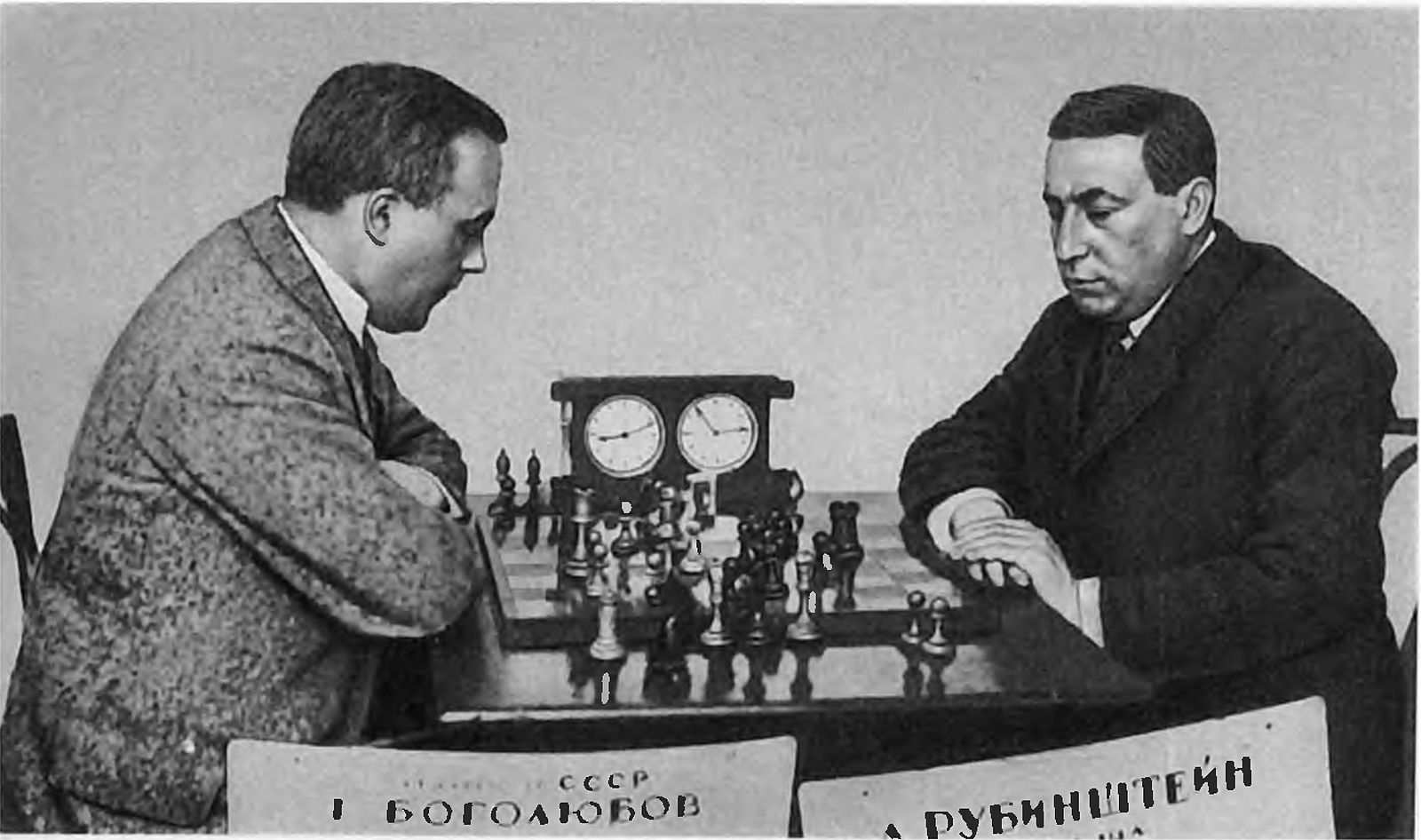GM Akiba Rubinstein

Bio
Akiba Rubinstein was a Polish grandmaster. He is best known for his incredible winning streak in 1912, when he won 5 consecutive tournaments. In 1914 a match was agreed upon between World Champion Emanuel Lasker and Rubinstein, unfortunately this event never took place because of World War I. Rubinstein is considered to be one of the strongest players to never win the world championship.
- Playing Style
- Early Days to World Class Player
- Unprecedented Winning Streak
- War Years and Later Career
- Legacy
Playing Style
Rubinstein's playing style was both positional and endgame-oriented. He was particularly talented in the opening and endgame phases, his knowledge and understanding of rook endings was far ahead of his time. IM Jeremy Silman ranked him as a top 5 endgame player of all time. Rubinstein's style was not confined to solely positional and endgame play, in this example we see Rubinstein conducting a brilliant attack. How often does one get to see white pawns on h6 and g6 simultaneously?
Early Days to World Class Player
Rubinstein learned to play chess at the age of 16. In 1903, he made the decision to devote himself to chess full-time. Within the next few years, Rubinstein showed that he was among the strongest players in the world. In 1907, Rubinstein won the strong Carlsbad international tournament, ahead of Maroczy, Nimzowitsch, Schlechter, Vidmar, Teichmann, Marshall, Tartakower, Janowsky and others. In 1909, he shared first place (alongside World Champion Lasker) in the St. Petersburg tournament.

In 1911, Rubinstein finished 2nd place in the San Sebastian tournament with an undefeated score of 9/14. He ended up 1/2 a point behind Capablanca (Capablanca's first international tournament victory), but ahead of Marshall, Tarrasch, Schlechter, Nimzowitsch and others. Rubinstein handed Capablanca his only loss of the tournament. In this game Rubinstein outplays Capablanca in the opening and early middle game (with the memorable 17. Qc1!), and wins a pawn. He then displays fantastic endgame technique to bring home the full point:
Unprecedented Winning Streak
1912 was a career year for Rubinstein, as he finished first in five consecutive major tournaments. At the time, this was an unprecedented accomplishment. According to chessmetrics, Rubinstein was the top player in the world from 1912 to 1914 - ahead of World Champion Emanuel Lasker. This time period was undoubtedly Rubinstein's peak, as nobody that he faced could stop him. Here is a game example from his victory at Breslau in 1912, where he fractures Marshall's pawns in the middle game before converting to a winning rook and pawn endgame:
After his impressive streak of tournament victories in 1912, World Champion Lasker accepted the challenge from Rubinstein to play for the title. They agreed to play their match in 1914. Unfortunately, World War I broke out, and the match was never played. This would be the first time that Rubinstein was unable to play for the world championship title, despite earning his place.
War Years and Later Career
During and after World War I, he continued to play in events and tournaments in Poland. Rubinstein came in 4th place in the 1922 London tournament, second place in the 1922 Hastings tournament, and won the 1922 Vienna tournament (ahead of Alekhine). World Champion Capablanca offered to play a match against Rubinstein, but Rubinstein was unable to raise the funds. This marked the second time that Rubinstein could (or even should) have played for the world championship title.
Rubinstein continued playing well throughout the 1920s, but never again had the consistent results he had before the war. In 1930, he played first board for the gold medal winning Polish team at the Hamburg Chess Olympiad. In 1931, he again played first board for the Polish team in the Olympiad. However, in 1932 Rubinstein stepped away from tournament chess. His mental state had noticeably deteriorated, as he suffered from social anxiety disorder and schizophrenia.

Legacy
In 1950, FIDE recognized Rubinstein as one of the original 27 players who were awarded the title of Grandmaster. His legacy is far-reaching, as many of his opening innovations and ideas are still used today. The Rubinstein variation of the Nimzo-Indian defense, French defense, and Tarrasch defense are all still considered the main lines of these openings today. His contributions to the Queen's gambit are also still practiced. His game against Rotlewi in 1907 is considered to be one of the best games of all time, and his endgame play is still used in many books and videos. The Rubinstein memorial tournament has been held annually since 1963 - a testament to the chess legend.


